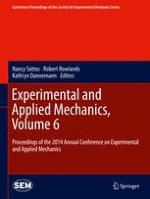2015 | Buch
Experimental and Applied Mechanics, Volume 6
Proceedings of the 2014 Annual Conference on Experimental and Applied Mechanics
herausgegeben von: Nancy Sottos, Robert Rowlands, Kathryn Dannemann
Verlag: Springer International Publishing
Buchreihe : Conference Proceedings of the Society for Experimental Mechanics Series
